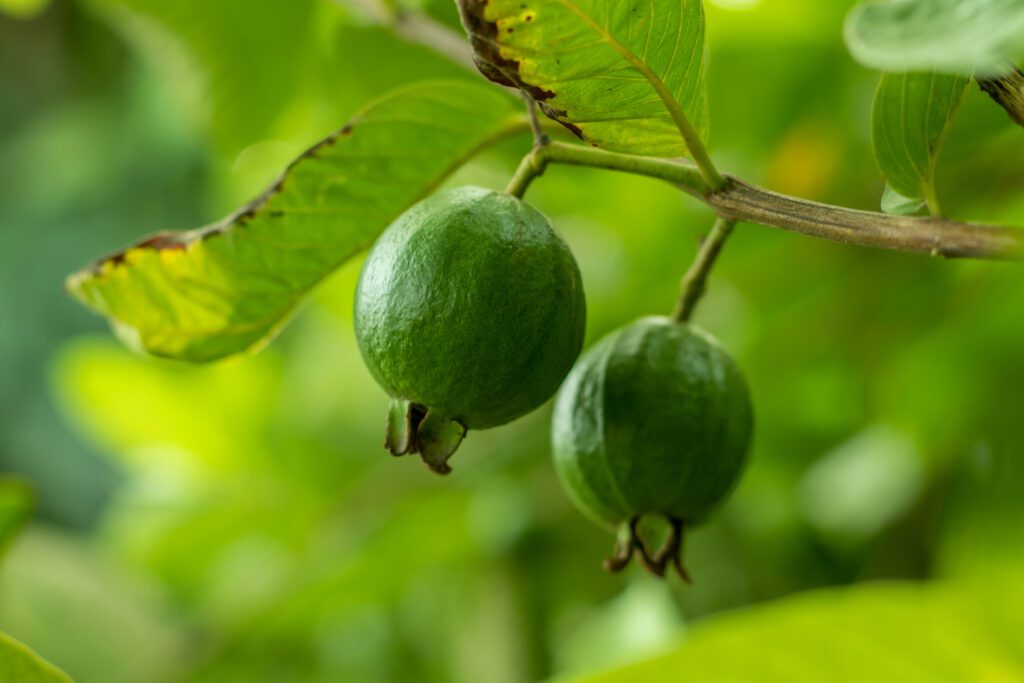by TERESA SCHIFFER
Sponsored by Farm Credit of Central Florida
Florida’s warm, humid climate makes it possible to grow a variety of delectable fruit crops, including tropical treats like guava. The sweet superfood is enormously popular throughout the world, and though it is native to the American tropics, India is actually the top producer and consumer of guava.
Where Guava Grows
Even though guava originated in the American tropics (the equatorial belt that ranges from the Tropic of Cancer in the Northern Hemisphere to the Tropic of Capricorn in the Southern Hemisphere), it is considered an invasive plant in South and some parts of Central Florida. Scientists think the fruit first evolved in the region of Central or South America, most likely southern Mexico or Peru.
Guava was actually introduced to Hawaii before it came to the mainland U.S., and that is thought to have occurred by 1791 – more than 150 years before Hawaii even became a state. The fruit trees made their way to Cuba and from there were introduced to Florida in 1847. The first commercial grove in Florida is thought to have been established in 1912 in Palma Sola, near Bradenton in Manatee County.
The trees can form dense thickets that crowd out native plant life, which is why they are classified as invasive in Hawaii as well as in parts of Florida. In Florida particularly, guava thickets can play host to the Caribbean fruit fly, an insect that is considered naturalized rather than invasive but is still considered a pest by other fruit growers. While the Caribfly poses little direct threat to our citrus groves, management practices must be adopted to prevent spreading the insect to other regions through crop exportation.
Why Guava Is So Popular
Guava can be harvested year-round in Florida, but the main seasons for the fruit are August through October and then February to March. It takes about 90 to 150 days after flowering for the fruit to be ready for harvest. The fruit can be harvested before it’s fully ripe so it can be transported long distances without sacrificing quality. Fruit that is intended for fresh consumption can be allowed to ripen on the tree or at room temperature in the home.
There are a multitude of ways to enjoy guava besides eating it fresh. It is often juiced or pureed, and added to sweets such as ice cream, pies, jellies, and pastries. Guava also pairs well with spices like garlic and ginger, so is an excellent component for savory dishes as well.
The nutritional value of guava puts it comfortably in the category of “superfoods.” You’ll get more vitamin C than you would from an orange, plus plenty of vitamin A, folate, potassium, fiber, and antioxidants. Some of the health benefits attributed to guava include improved blood sugar control, better heart health, digestive aid, protection against cancer, anti-aging effects in skin, and a boost in immunity. In addition to the fruit itself, there are applications for using the leaves also for health and wellness care.
Florida’s Guava Industry
A single guava tree can produce an average of 50 to 80 pounds of fruit per year, and live for 40 years. Growers can generally plant 150 trees per acre, harvesting roughly 8,000 pounds of fruit per acre per year. As of 2016, guavas were selling for $2 per pound at the packinghouse, and after factoring for production costs, growers could expect a return of about $9,000 profit per acre each year.

